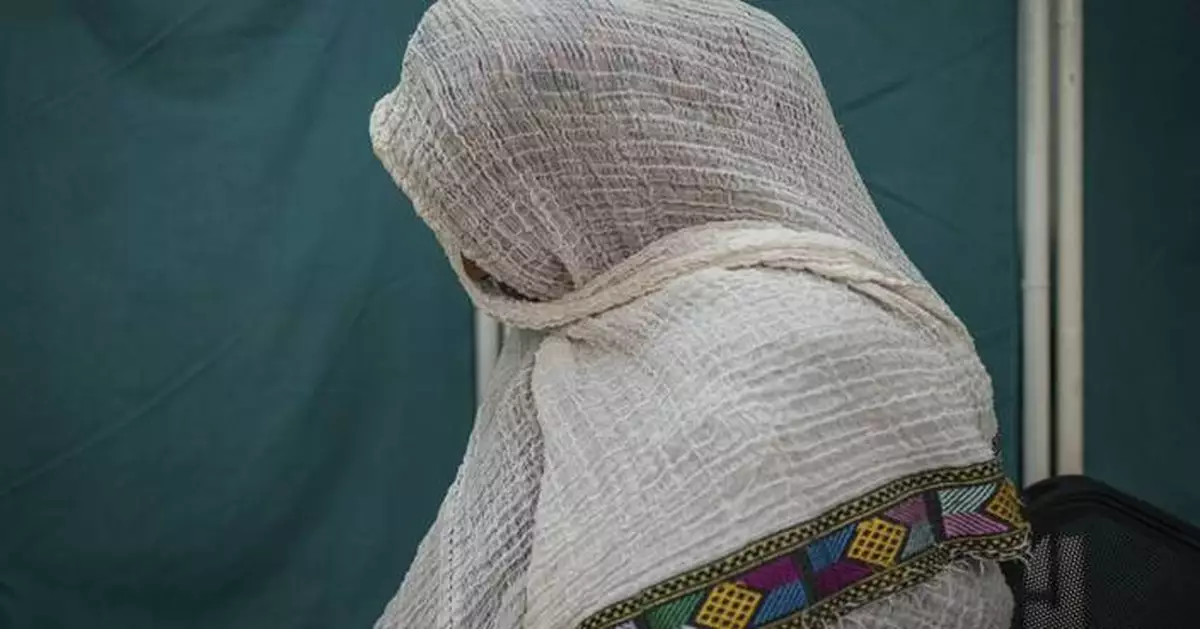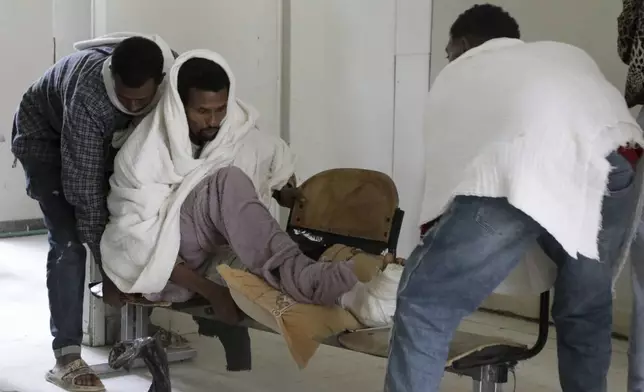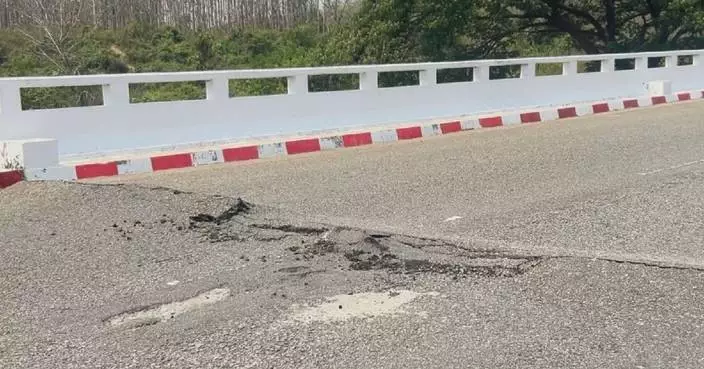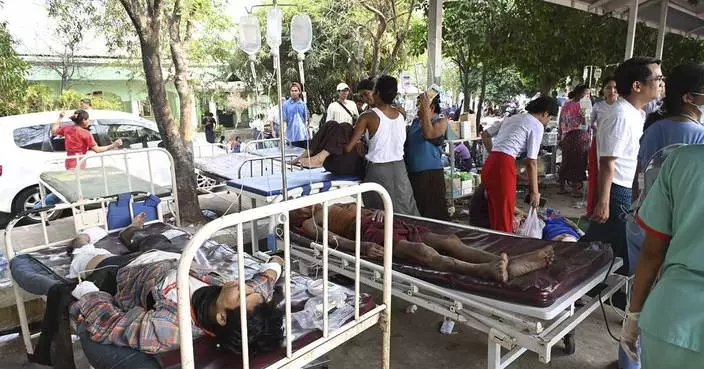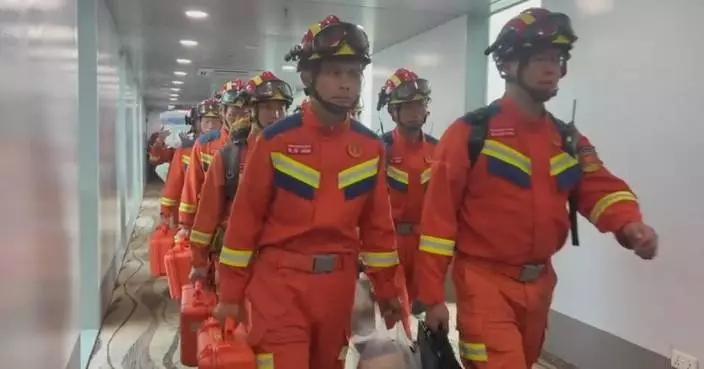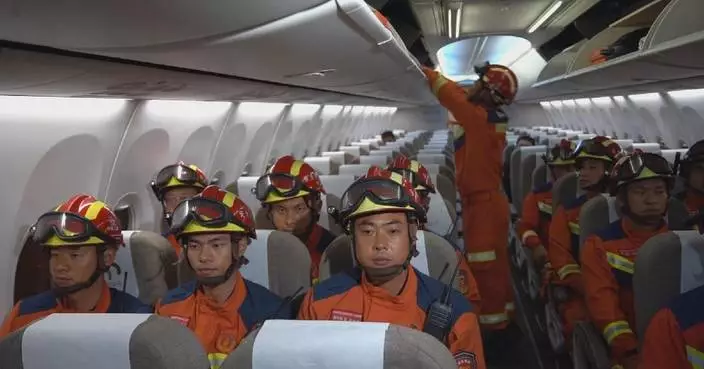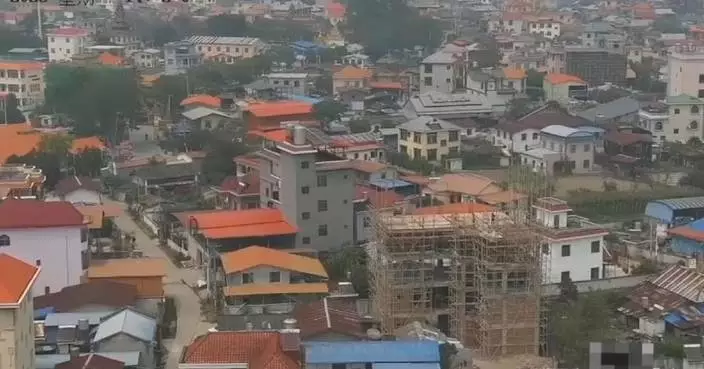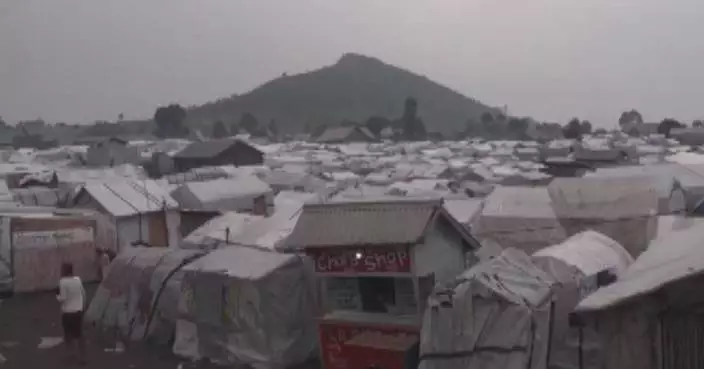SHIRE, Ethiopia (AP) — The woman survived two brutal attacks in the dying days of the war in Ethiopia’s Tigray region. First, she said, she was dragged to a military encampment and gang-raped by Eritrean soldiers who held dozens of other women. Two days later, she was raped again by a group of militiamen.
Her attackers broke her collarbone and her wrist. They also infected her with HIV. More than two years later, she can sometimes buy antiretroviral drugs by selling part of the wheat she gets as a displaced person, but it's not enough.
Click to Gallery
Rigat Bishaw, right, a health worker, speaks with a victim of rape living with HIV at Ayder hospital in Mekele in the Tigray region of northern Ethiopia, Feb. 13, 2025. (AP Photo/Amanuel Birhane)
Amanuel Haile, the head of Tigray's health bureau, speaks during an interview with The Associated Press in Mekele in the Tigray region of northern Ethiopia, Feb. 13, 2025. (AP Photo/Amanuel Birhane)
A rape victim breaks down during an interview with The Associated Press in Shire in the Tigray region of northern Ethiopia, Oct. 21, 2024. (AP Photo/Fred Harter)
A patient receives support while seated on a chair at Ayder Hospital in Mekele in the Tigray region of northern Ethiopia, Feb. 13, 2025. (AP Photo/Amanuel Birhane)
People wait in queues at Ayder Hospital in Mekele in the Tigray region of northern Ethiopia, Feb. 13, 2025. (AP Photo/Amanuel Birhane)
A woman who says she was dragged to a military encampment and gang raped by Eritrean soldiers and militiamen over a period of two days, pose for a photo in Shire in the Tigray region of northern Ethiopia, Oct. 21, 2024. (AP Photo/Fred Harter)
“I am strong, but my disease is getting worse and worse,” the woman told The Associated Press at a clinic in Shire, a town in northwestern Tigray. The AP typically does not identify people who are victims of sexual abuse.
Tigray was once considered a model in the fight against HIV. Years of awareness-raising efforts had brought the region's HIV prevalence rate to 1.4%, one of the lowest in Ethiopia.
Then, in 2020, war began between Ethiopia's government, backed by neighboring Eritrea, and Tigray fighters.
Sexual violence was widespread in the two-year conflict, which also had mass killings, hunger and disease. As many as 10% of women and girls aged between 15 and 49 in the region of 6 million people were subject to sexual abuse, mostly rape and gang rape, according to a study published by BMJ Global Health in 2023.
At the same time, Tigray’s health system was systematically looted and destroyed, leaving only 17% of health centers functional, according to another study in the same journal.
As a result, 90% of sexual violence survivors did not get timely medical support.
The woman told the AP she did not get medication for nearly eight months. The window for receiving prophylaxis to prevent HIV is 72 hours.
Today the HIV prevalence rate in Tigray is 3%, more than double the prewar average, according to local health authorities and the United Nations. The rate among the region’s roughly 1 million displaced people is 5.5%.
Among sexual violence survivors, it is 8.6%.
“It was a horrific conflict,” said Amanuel Haile, the head of Tigray’s health bureau. “War was everywhere. Crops failed. Rape was widespread. Hospitals were vandalized. Drugs were interrupted.”
The “complete breakdown” of Tigray’s health services also meant existing HIV patients did not receive antiretrovirals during the war, increasing their risk of transmitting the virus through pregnancy or unprotected sex, Amanuel said.
Few condoms were available during the war, which saw Tigray cut off from the rest of Ethiopia. Today, some destitute displaced people engage in sex work to survive, another factor that health workers believe is contributing to the spike in HIV cases.
The Trump administration’s decision to kill 83% of U.S. Agency for International Development programs globally is worsening the situation.
Ethiopia has already laid off 5,000 health workers who were hired with U.S. funds to combat HIV. Meanwhile, charities helping HIV patients receive treatment have received stop-work orders.
They include the Organization for Social Services, Health and Development, a national agency whose Tigray branch was testing people for HIV and giving HIV patients food and financial support.
“Since the end of the war, things were slowly improving,” said Yirga Gebregziabher, OSSHD’s manager in Tigray. “Now so many services have stopped again.”
Like the rest of Ethiopia, Tigray is also grappling with sharp rises in other infectious diseases because of the effects of conflict, climate change and funding cuts.
Nationally, malaria cases have soared from 900,000 in 2019 to over 10 million last year. The war interrupted efforts to distribute nets and spray high-risk areas with insecticides to prevent the mosquito-borne disease. Measles rose from 1,941 cases in 2021 to 28,129 in 2024. Cholera and tuberculosis are also making comebacks.
Health workers say Tigray is particularly ill-equipped to deal with these outbreaks. It has few ambulances after most of its emergency vehicles were destroyed in the war. Some doctors have not been paid for 17 months. And its biggest health facility, Ayder Referral Hospital, only has 50% of the drugs it needs.
“These outbreaks are extremely damaging,” said Amanuel with the regional health bureau. “We have a lot to rebuild, and outbreaks take up whatever meager resources we have.”
Meanwhile millions in Tigray still rely on humanitarian aid and 18% of children are malnourished, leaving them vulnerable to diseases.
“We are attempting to rebuild, but still in a state of crisis,” said Abraha Gebreegziabher, the clinical director of Ayder Referral Hospital.
Abraha’s institution is grappling with severe budget cuts and debts that mean it cannot afford basic drugs or items like tubes and syringes. The hospital requires patients to pay for services that were previously free.
Crucially, the war also destroyed Tigray’s system of community-based health insurance, a low-cost program that underpinned the region’s health system.
Restarting this scheme is the health bureau’s top priority, Amanuel said.
But Tigray's political leaders have become locked in a power struggle that escalated this month when a faction took over several government offices. That threatens to deter donors who have memories of the recent war.
Associated Press writer Samuel Getachew in Mekele, Ethiopia, contributed to this report.
For more on Africa and development: https://apnews.com/hub/africa-pulse
The Associated Press receives financial support for global health and development coverage in Africa from the Gates Foundation. The AP is solely responsible for all content. Find AP’s standards for working with philanthropies, a list of supporters and funded coverage areas at AP.org.

Rigat Bishaw, right, a health worker, speaks with a victim of rape living with HIV at Ayder hospital in Mekele in the Tigray region of northern Ethiopia, Feb. 13, 2025. (AP Photo/Amanuel Birhane)
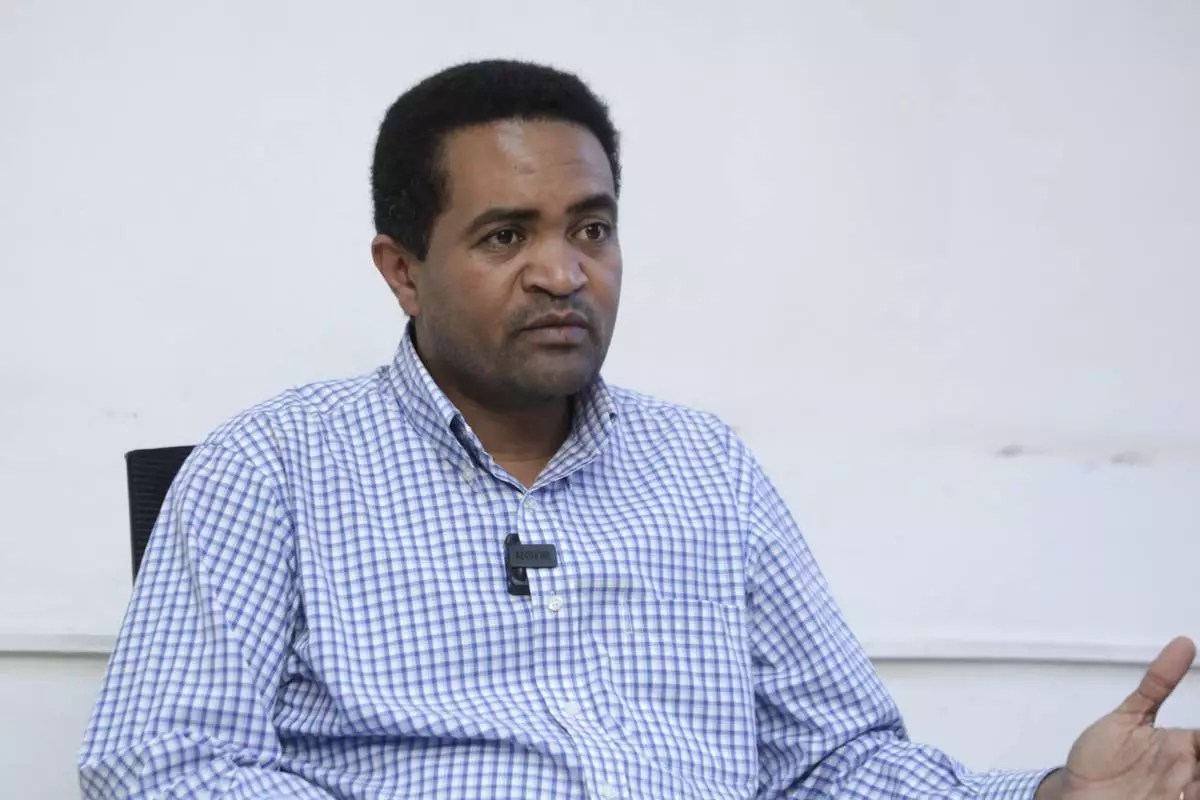
Amanuel Haile, the head of Tigray's health bureau, speaks during an interview with The Associated Press in Mekele in the Tigray region of northern Ethiopia, Feb. 13, 2025. (AP Photo/Amanuel Birhane)

A rape victim breaks down during an interview with The Associated Press in Shire in the Tigray region of northern Ethiopia, Oct. 21, 2024. (AP Photo/Fred Harter)

A patient receives support while seated on a chair at Ayder Hospital in Mekele in the Tigray region of northern Ethiopia, Feb. 13, 2025. (AP Photo/Amanuel Birhane)
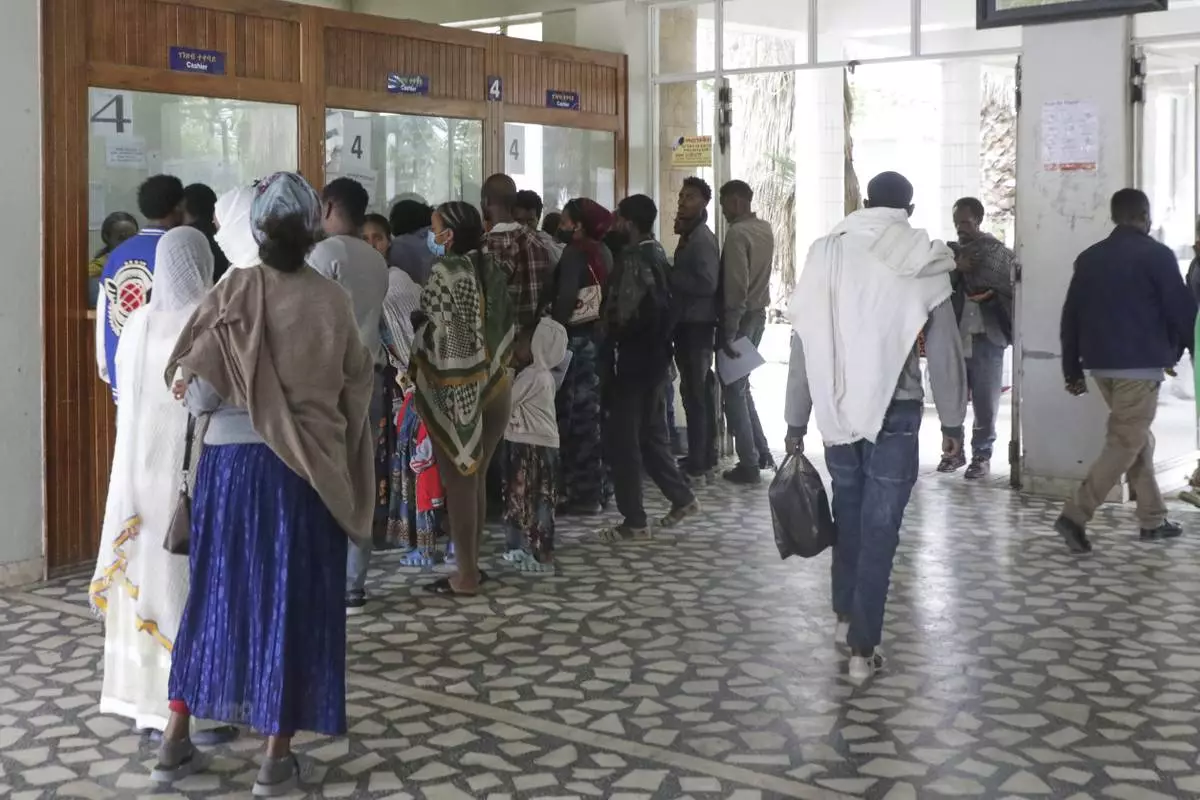
People wait in queues at Ayder Hospital in Mekele in the Tigray region of northern Ethiopia, Feb. 13, 2025. (AP Photo/Amanuel Birhane)
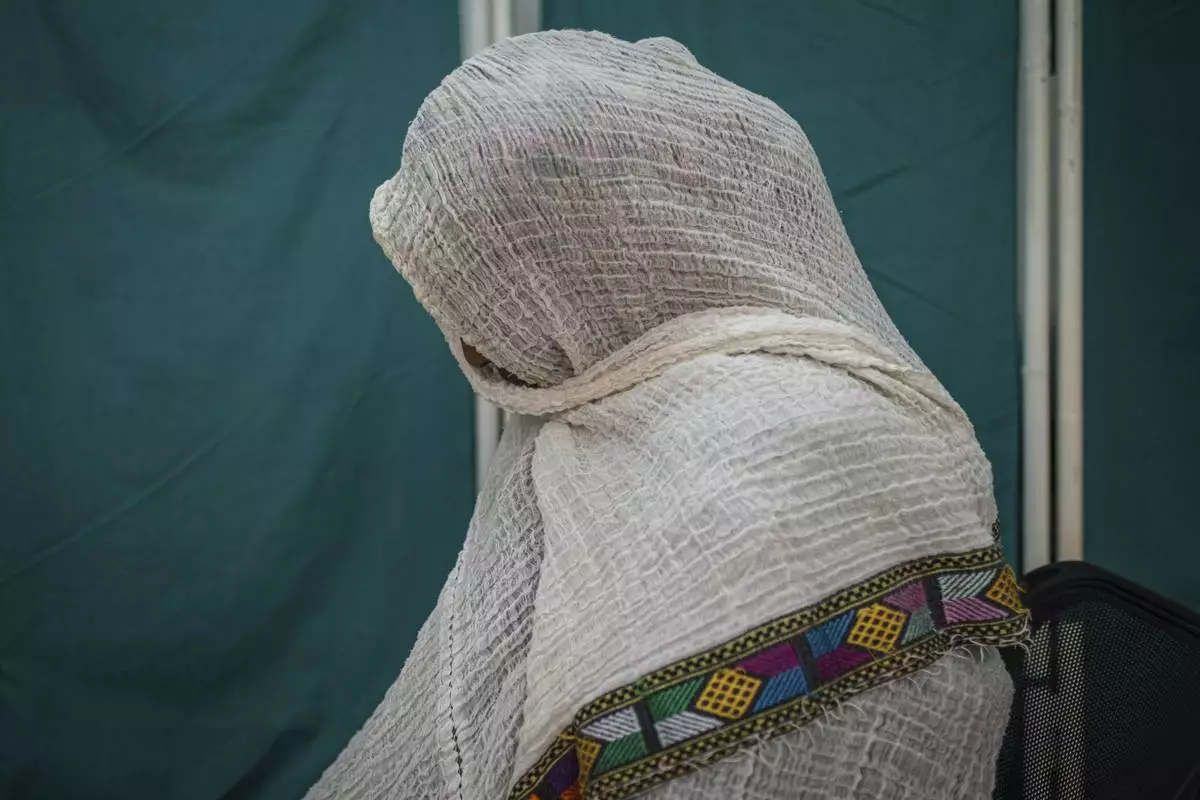
A woman who says she was dragged to a military encampment and gang raped by Eritrean soldiers and militiamen over a period of two days, pose for a photo in Shire in the Tigray region of northern Ethiopia, Oct. 21, 2024. (AP Photo/Fred Harter)
BANGKOK (AP) — The death toll from a powerful 7.7 magnitude earthquake in Myanmar jumped to nearly 700 on Saturday as more bodies were pulled from the rubble of the scores of buildings that collapsed when it struck near the country's second-largest city.
State-run television MRTV reported that 694 people have now been found dead and another 1,670 injured, with 68 others missing, according to a statement from the military-led government. The same figures were also reported by the independent news site The Irrawaddy.
Myanmar is in the throes of a prolonged and bloody civil war, which is already responsible for a massive humanitarian crisis. It makes movement around the country both difficult and dangerous, complicating relief efforts and raising fears that the death toll could still rise precipitously.
The earthquake struck midday Friday with an epicenter not far from Mandalay, followed by several aftershocks including one measuring a strong 6.4 magnitude. It sent buildings in many areas toppling to the ground, buckled roads, caused bridges to collapse and burst a dam.
The head of Myanmar’s military government, Senior Gen. Min Aung Hlaing, said in a rare television broadcast Friday that the death toll was expected to rise as he reported an initial 144 people found dead.
In neighboring Thailand, the quake rocked the greater Bangkok area, home to some 17 million people — many of whom live in high-rise buildings — and other parts of the country.
Bangkok city authorities said so far six people have been found dead, 26 injured and 47 are still missing, most from a construction site near the capital's popular Chatuchak market.
When the quake hit, the 33-story high-rise being built by a Chinese firm for the Thai government wobbled, then came crashing to the ground in a massive plume of dust that sent people screaming and fleeing from the scene.
On Saturday, more heavy equipment was brought in to move the tons of rubble, but hope was fading among friends and family members of the missing that they would be found alive.
“I was praying that that they had survived but when I got here and saw the ruin — where could they be? In which corner? Are they still alive? I am still praying that all six are alive,” said 45-year-old Naruemol Thonglek, sobbing as she awaited news about her partner, who is from Myanmar, and five friends who worked at the site.
“I cannot accept this. When I see this I can’t accept this. A close friend of mine is in there, too,” she said.
Waenphet Panta said she hadn't heard from her daughter Kanlayanee since a phone call about an hour before the quake. A friend told her Kanlayanee had been working high on the building on Friday.
“I am praying my daughter is safe, that she has survived and that she’s at the hospital,” she said, Kanlayanee’s father sitting beside her.
Myanmar’s government said blood was in high demand in the hardest-hit areas. In a country where prior governments sometimes have been slow to accept foreign aid, Min Aung Hlaing said Myanmar was ready to accept assistance.
A 37-member team from the Chinese province of Yunnan reached the city of Yangon early Saturday with earthquake detectors, drones and other supplies, the official Xinhua news agency reported.
Russia’s emergencies ministry dispatched two planes carrying 120 rescuers and supplies, according to a report from the Russian state news agency Tass.
India sent a search and rescue team and a medical team as well as provisions, while Malaysia’s foreign ministry said the country will send 50 people on Sunday to help identify and provide aid to the worst-hit areas.
The United Nations allocated $5 million to start relief efforts. President Donald Trump said Friday that the U.S. was going to help with the response, but some experts were concerned about this effort given his administration’s deep cuts in foreign assistance.
The Trump administration's cuts to the United States Agency for International Development have already forced the United Nations and non-governmental organization to cut many programs in Myanmar.
AP writers Jerry Harmer and Grant Peck in Bangkok contributed to this report.
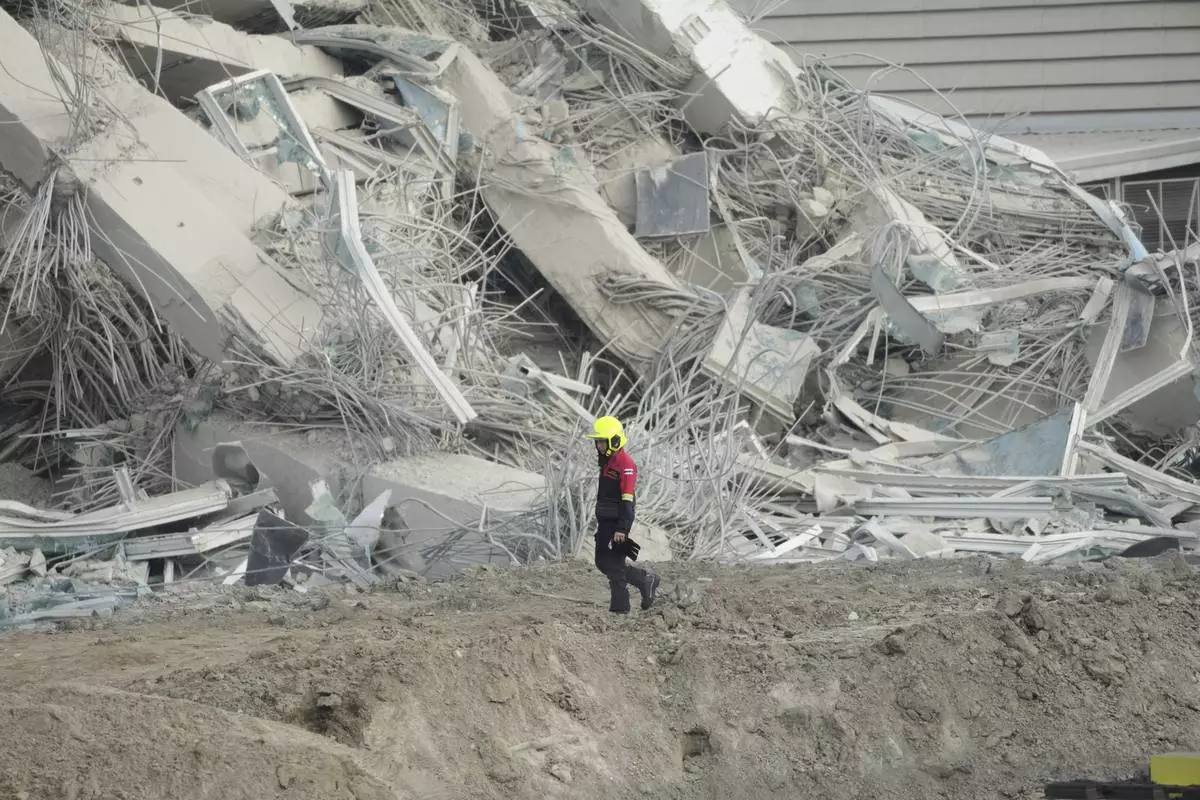
A rescuer walks past debris of a construction site for a high-rise building in Bangkok, Thailand, Saturday, March 29, 2025, during a search mission at the collapsed building after Friday's earthquake. (AP Photo/Sakchai Lalit)
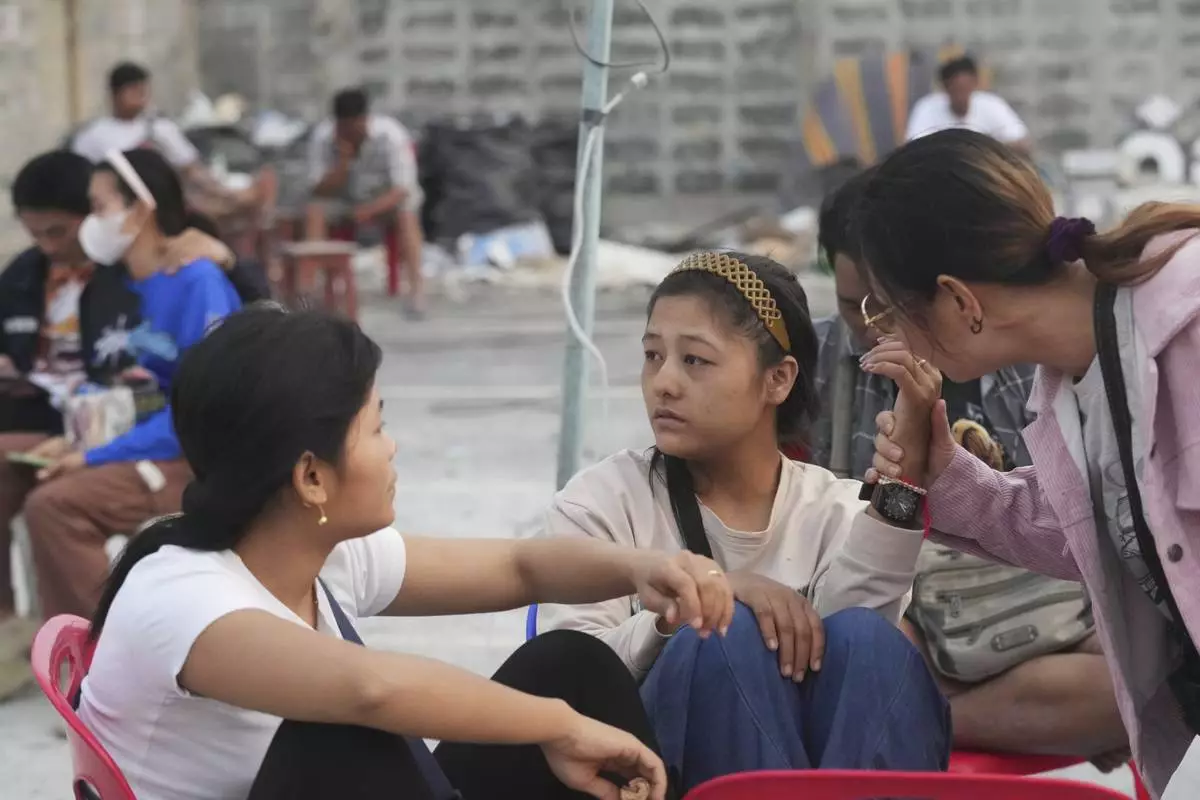
Relatives of workers at a high-rise building under construction that collapsed after a strong earthquake wait as rescuers search for victims, in Bangkok, Thailand, Saturday, March 29, 2025. (AP Photo/Sakchai Lalit)
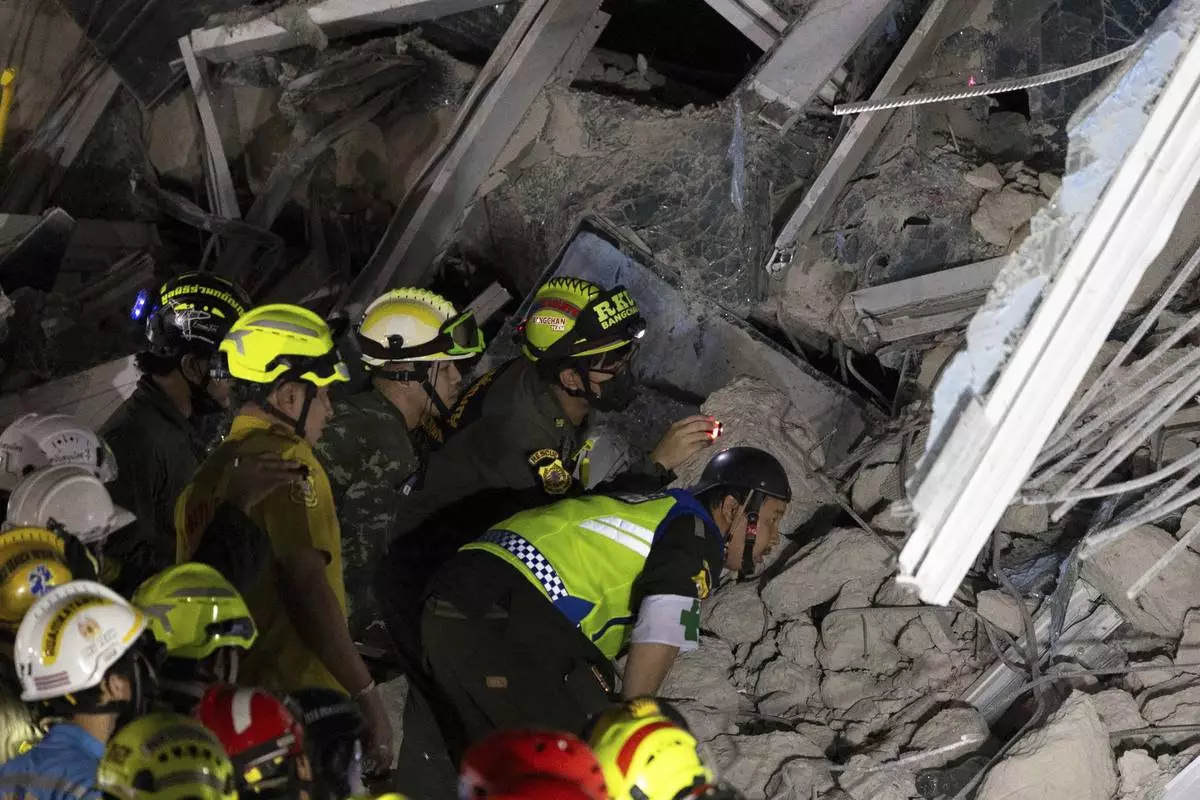
Rescuers search for victims at the site of a high-rise building under construction that collapsed after a strong earthquake in Bangkok, Thailand, early Saturday, March 29, 2025. (AP Photo/Wason Wanichakorn)
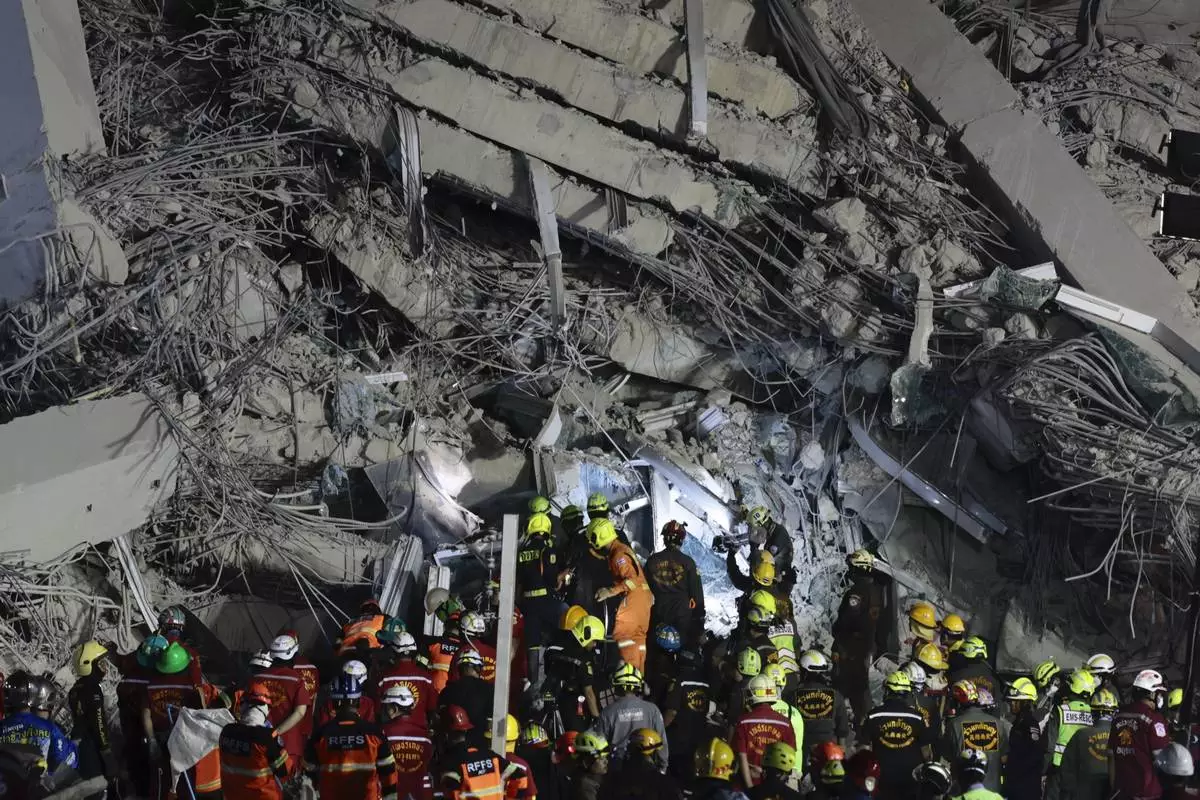
Rescuers work at the site of a high-rise building under construction that collapsed after a 7.7 magnitude earthquake in Bangkok, Thailand, early Saturday, March 29, 2025. (AP Photo/Wason Wanichakorn)
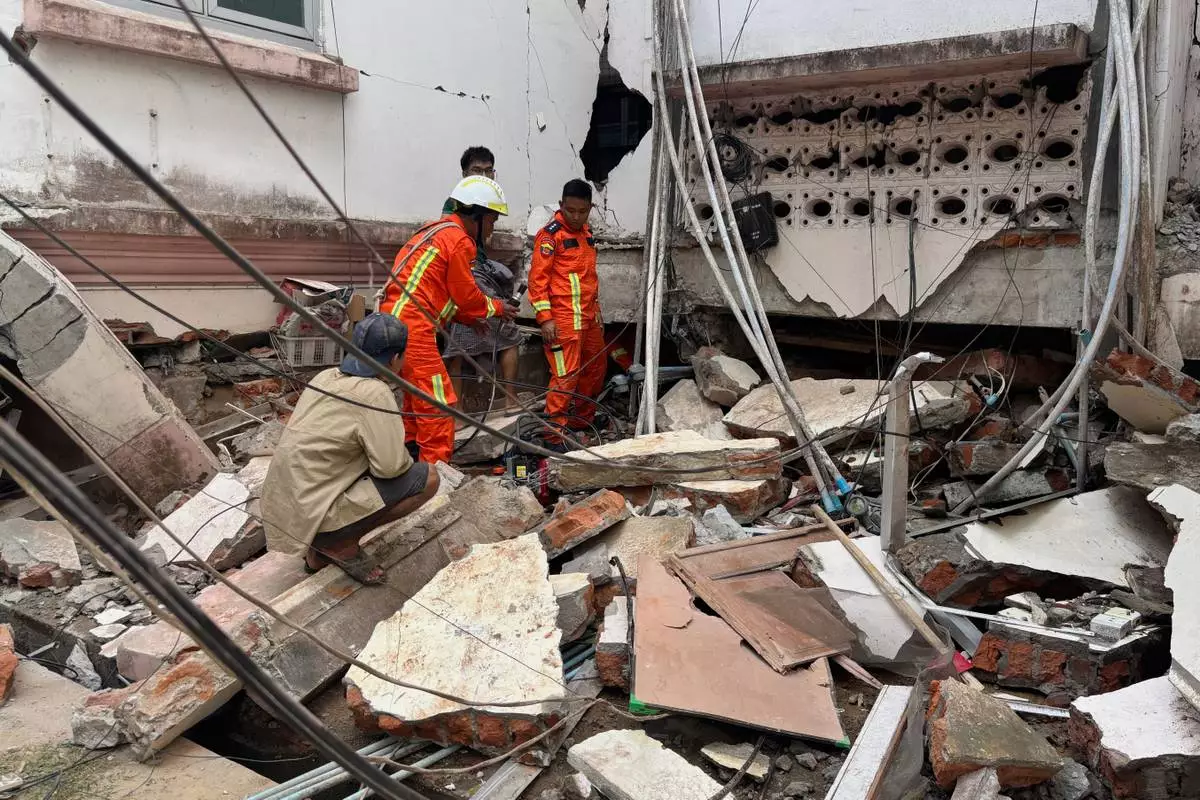
Vehicles make their way near a road damaged by an earthquake Friday, March 28, 2025, in Naypyitaw, Myanmar. (AP Photo/Aung Shine Oo)
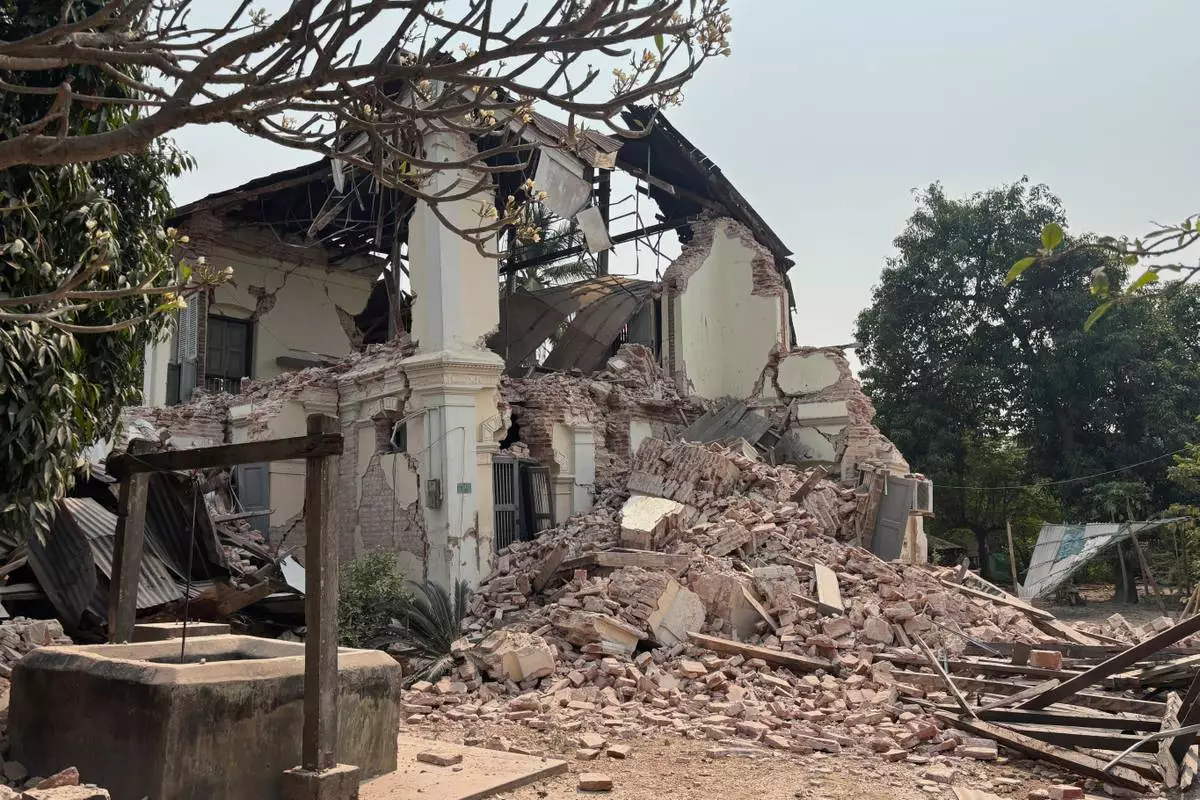
A building is damaged after earthquake Friday, March 28, 2025, in Naypyitaw, Myanmar. (AP Photo/Aung Shine Oo)
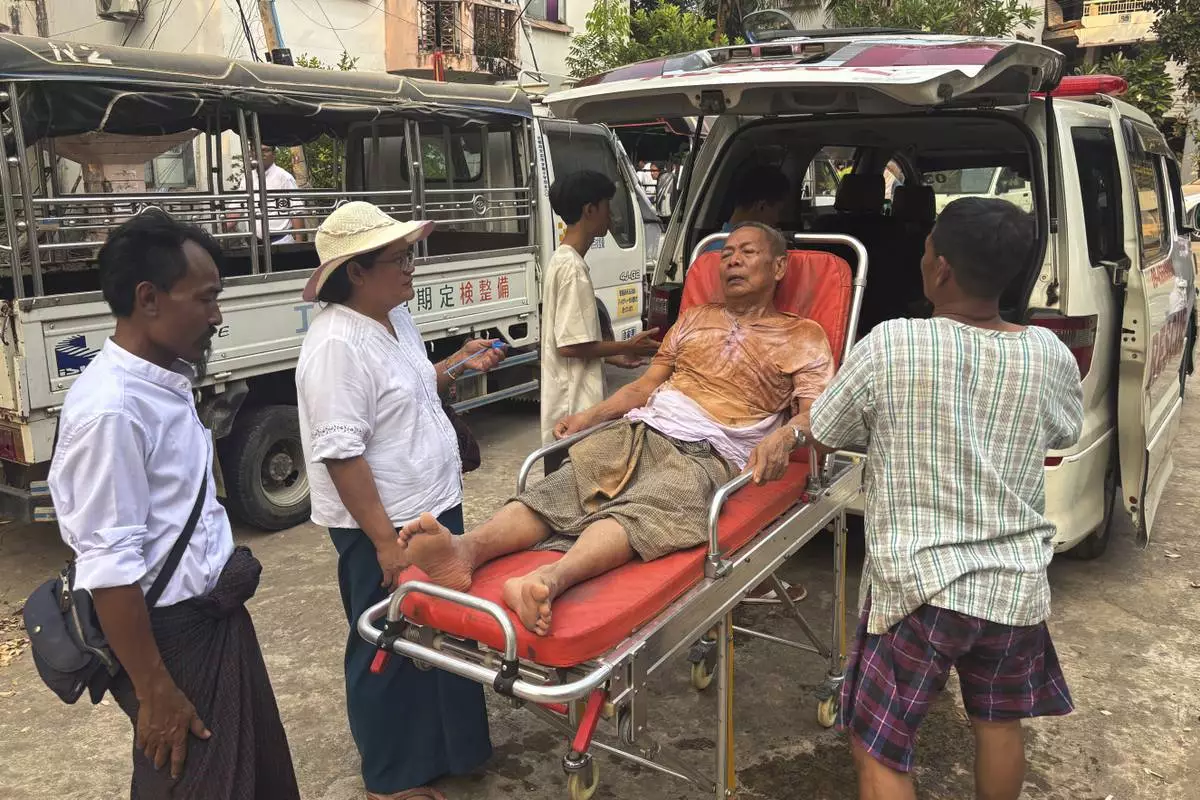
Rescue workers take an injured man who was trapped under a building Friday, March 28, 2025, in Naypyitaw, Myanmar. (AP Photo/Aung Shine Oo)
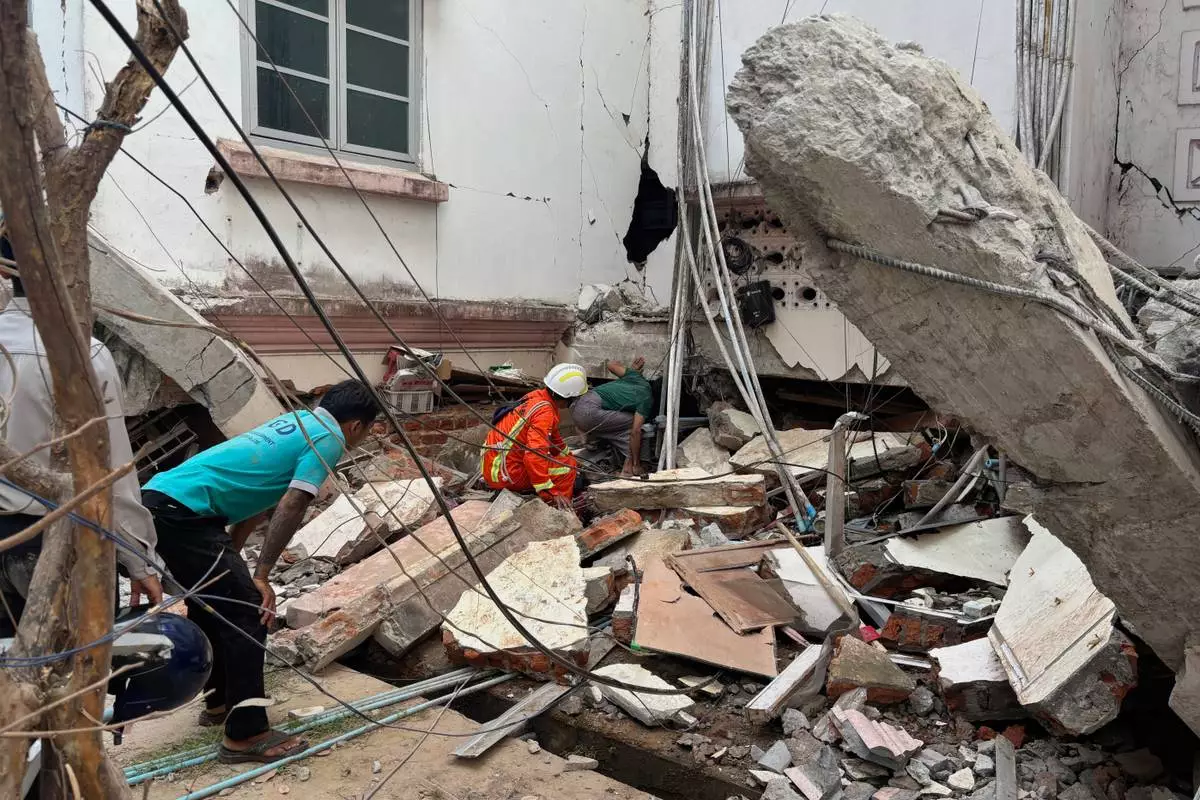
Volunteers look for survivors near a damaged building Friday, March 28, 2025, in Naypyitaw, Myanmar. (AP Photo/Aung Shine Oo)
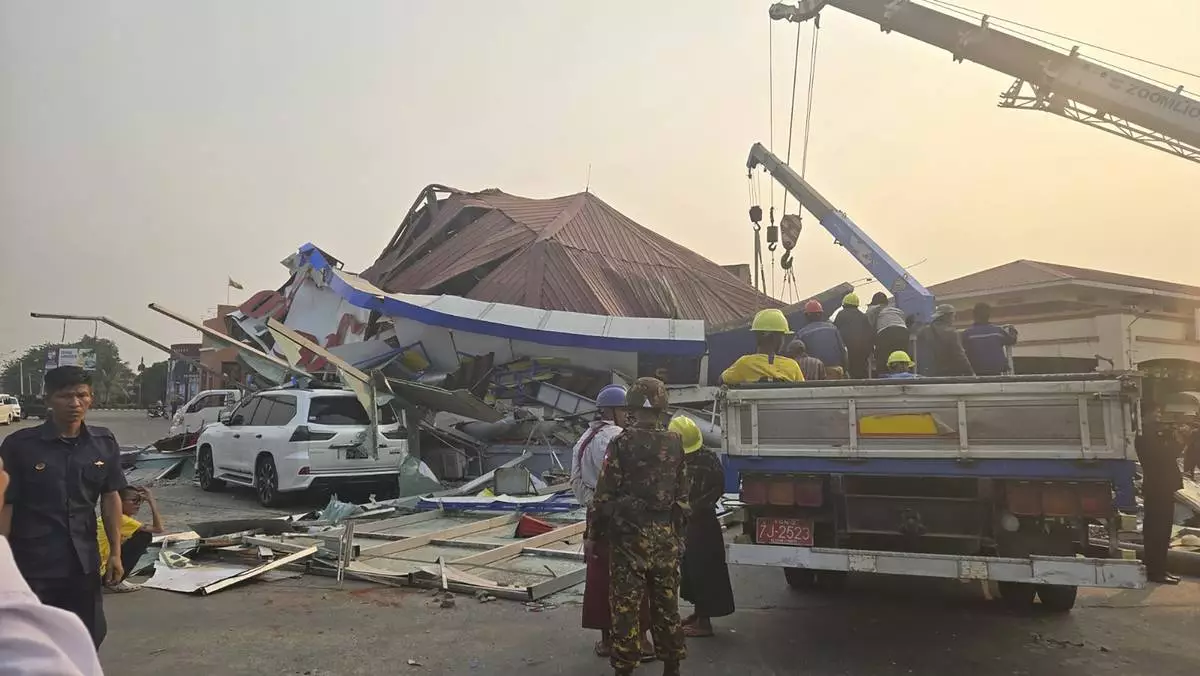
In this image provided by The Myanmar Military True News Information Team, volunteers rescue near damaged buildings caused by an earthquake is seen Friday, March 28, 2025, in Naypyitaw, Myanmar. (The Myanmar Military True News Information Team via AP)

In this image provided by The Myanmar Military True News Information Team, Myanmar's military leader Senior Gen. Min Aung Hlaing, center, inspects damaged road caused by an earthquake Friday, March 28, 2025, in Naypyitaw, Myanmar. (The Myanmar Military True News Information Team via AP)
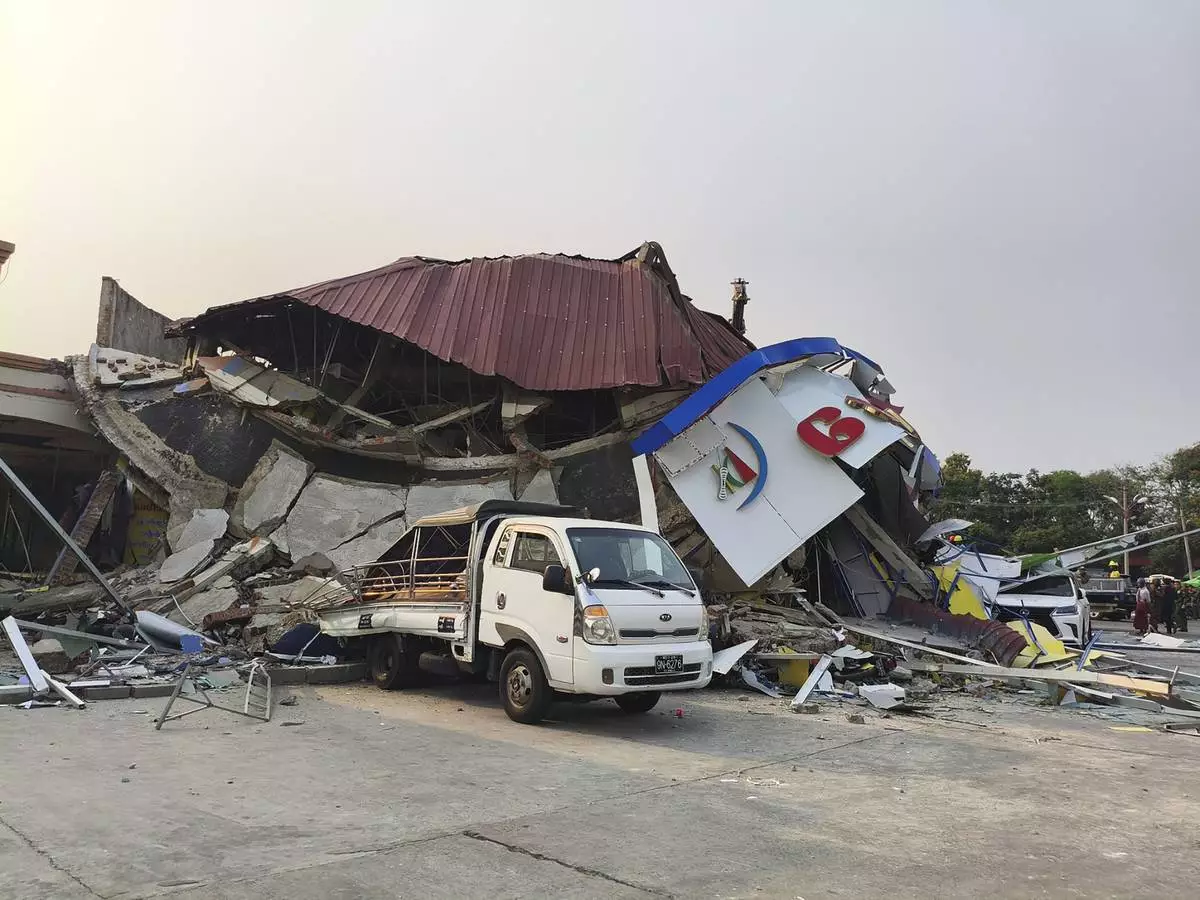
In this image provided by The Myanmar Military True News Information Team, Damaged buildings caused by an earthquake is seen Friday, March 28, 2025, in Naypyitaw, Myanmar. (The Myanmar Military True News Information Team via AP)
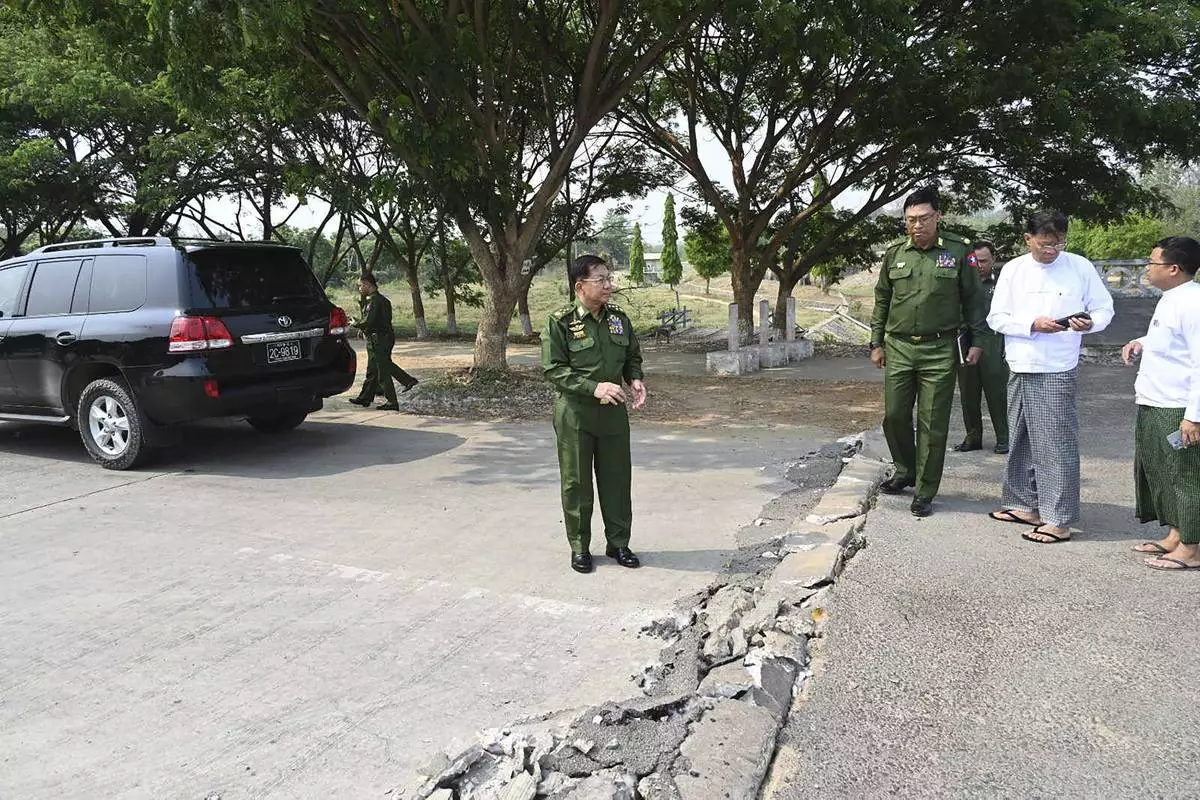
In this image provided by The Myanmar Military True News Information Team, Myanmar's military leader Senior Gen. Min Aung Hlaing, center, inspects damaged road caused by an earthquake Friday, March 28, 2025, in Naypyitaw, Myanmar. (The Myanmar Military True News Information Team via AP)
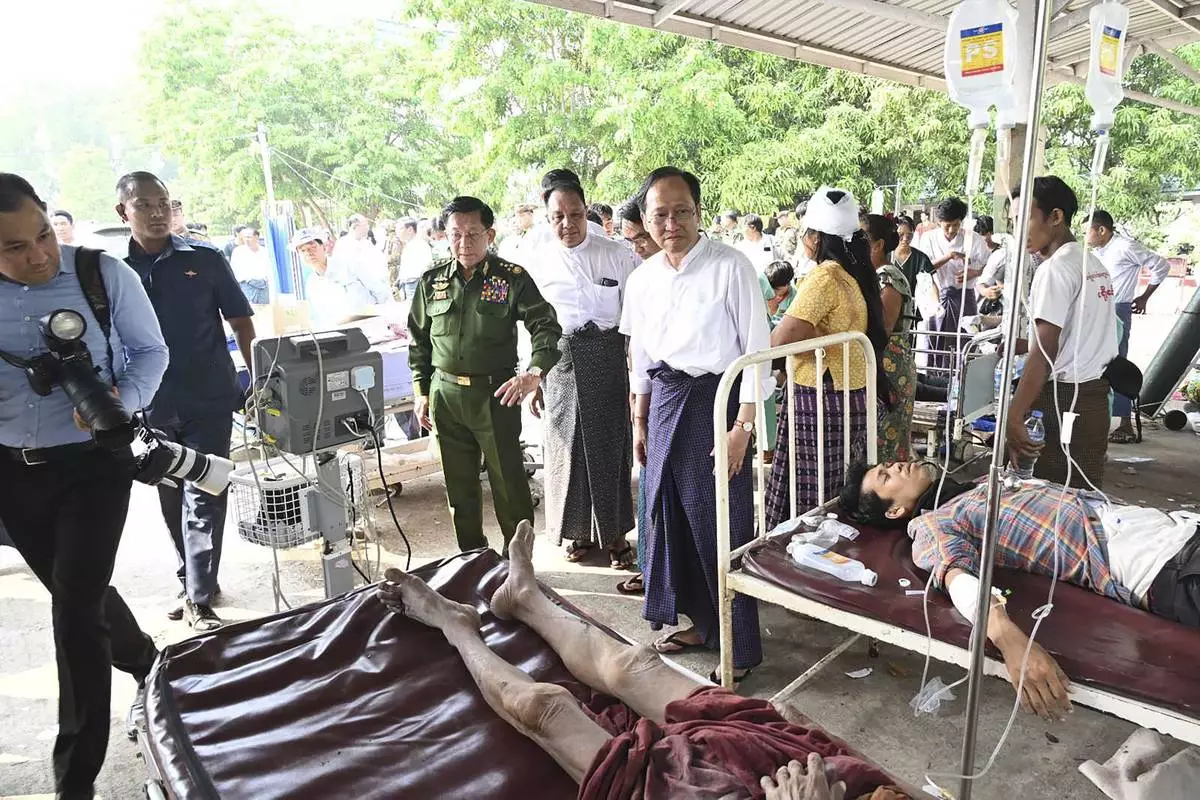
In this image provided by The Myanmar Military True News Information Team, Myanmar's military leader Senior Gen. Min Aung Hlaing, center, inspects victims caused by an earthquake Friday, March 28, 2025, in Naypyitaw, Myanmar. (The Myanmar Military True News Information Team via AP)








